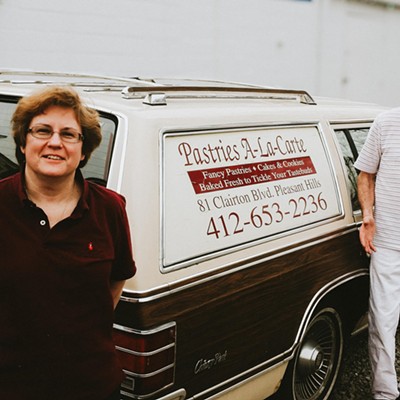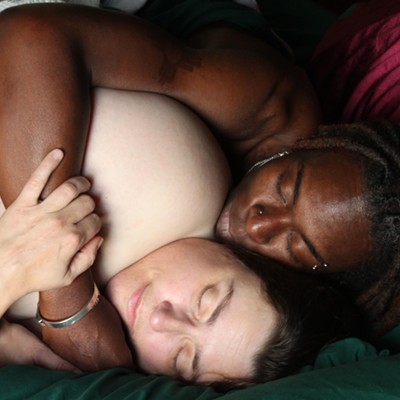Watching Reefer Madness, the anti-drug film turned camp classic, I was unsure, beyond comedy, what it held for a modern audience. But the nearly 90-year-old film has some of the same culture war absurdities that exist today, and it begins at the most contemporary of political sites — a PTA meeting. A high school principal addresses a group of concerned parents about the “soul-destroying … menace of marijuana,” referred to as a narcotic throughout the 1936 film.
Naturally, a group of teenagers including our protagonist, Bill — described as a “fine, upstanding American boy” — are lured into a pot-fueled den of sin by a swing-dancing, drug-dealing unmarried couple (who I noticed used the same foot-in-the-door tactics employed by church groups like the one that originally funded the film). Addicted after only a few puffs, the innocent youth find themselves on a doomed path leading to manslaughter, attempted rape, suicide, murder, a grand trial, and “hopeless insanity,” all within a 68-minute runtime.
In honor of 420, Pittsburgh Sound + Image will present a screening of the film at the Harris Theater. A 16mm print of Reefer Madness will screen on Sat., April 20 at 7:30 p.m. and will be preceded by shorts from the 1930s and ‘40s, including Betty Boop cartoons and Boogie-Woogie Dream.
Beyond appreciation for the film’s weed-driven crime melodrama (aided by the '30s-style acting), Pittsburgh Sound + Image also discovered that Reefer Madness has deep local ties.
The “educational” film — its format emblematic of Hollywood’s Hays Code era of censorship — made a splash in its time. Only two years after it was shot, it was purchased and quickly recut as an exploitation film, shown through the 1950s, then revived as a midnight movie in the ‘70s. That revival begat stage adaptations and a 2005 television movie musical starring Alan Cumming, and, though we may be approaching a camp saturation point, it remains beloved by stoners and cult movie fans, even as critics have panned it as the worst movie ever made.
The film screened under different names across film territories in the 1930s and ‘40s — in Pennsylvania and West Virginia, it was called The Burning Question. It appears in dozens of film listings in the Pittsburgh Post-Gazette, showing at the “air-conditioned” Harris Theater in Downtown Pittsburgh, then called the Art Cinema. An illustrated P-G ad from June 1940 hypes The Burning Question — showing for 25 cents — as “Daring! Frank!” and promises “Youth Inhaling Destiny … Exhaling Lust!” Another Art Cinema ad shows Reefer Madness’ fallen heroes, lit joints hanging from their mouths, hovering over a woman lying supine. “Innocent Youth / Victims of the New Social Menace / Public Enemy No. 1” the copy read. “You Must See This Sensational Expose!”
According to Pittsburgh Sound + Image, Reefer Madness played a key role in keeping the Art Cinema afloat in its earliest days. Opened in 1931 by theater owner Gabe Rubin (who also owned the Pittsburgh Condors basketball team), Art Cinema lived up to its name, showing foreign films now considered modern classics, like Akira Kurosawa’s Rashomon. Profit margins were thin, and obtaining and distributing foreign films was challenging during World War II.
Enter The Burning Question. In June 1940, as the movie hit Pa. theaters, recut and with more salacious scenes added, Rubin acquired distribution rights, and the Art Cinema showed it eight times a day. A P-G article details the film’s 17-week, record-breaking run that extended into October of that year, with showings listed throughout the 1940s. PSI also points out that, ironically, the profits driven by the morality crusade movie of The Burning Question allowed the Harris Theater to stay open into the 1960s, for a time becoming a porn theater as part of Pittsburgh’s red-light district.
The movie could’ve disappeared after that, if not for a “nostalgia” push 30 years after its record-breaking run. In Nov. 1972, P-G entertainment editor George Anderson spotlighted the revival of “one of the most obscure movies ever made.” Before camp was so ubiquitous that it merited its own Met Gala theme, Anderson identified Reefer Madness as “a rare example of camp, that is unintentional humor.” The movie’s re-emergence persisted into the 2000s, even earning its own RiffTrax commentary on a colorized DVD released in 2010.
Although moral panic about marijuana has quieted, films capitalizing on moral panic have not. Christian films such as the recent child-trafficking saga Sound of Freedom spring to mind as a direct Reefer Madness descendent (released on Independence Day last year to critical scorn, it went on to make $250 million at the box office). Time will tell if that film’s earnestness and moralizing will eventually confer it the same status as a laughable cult classic — a joint smoked beforehand would certainly help.


















